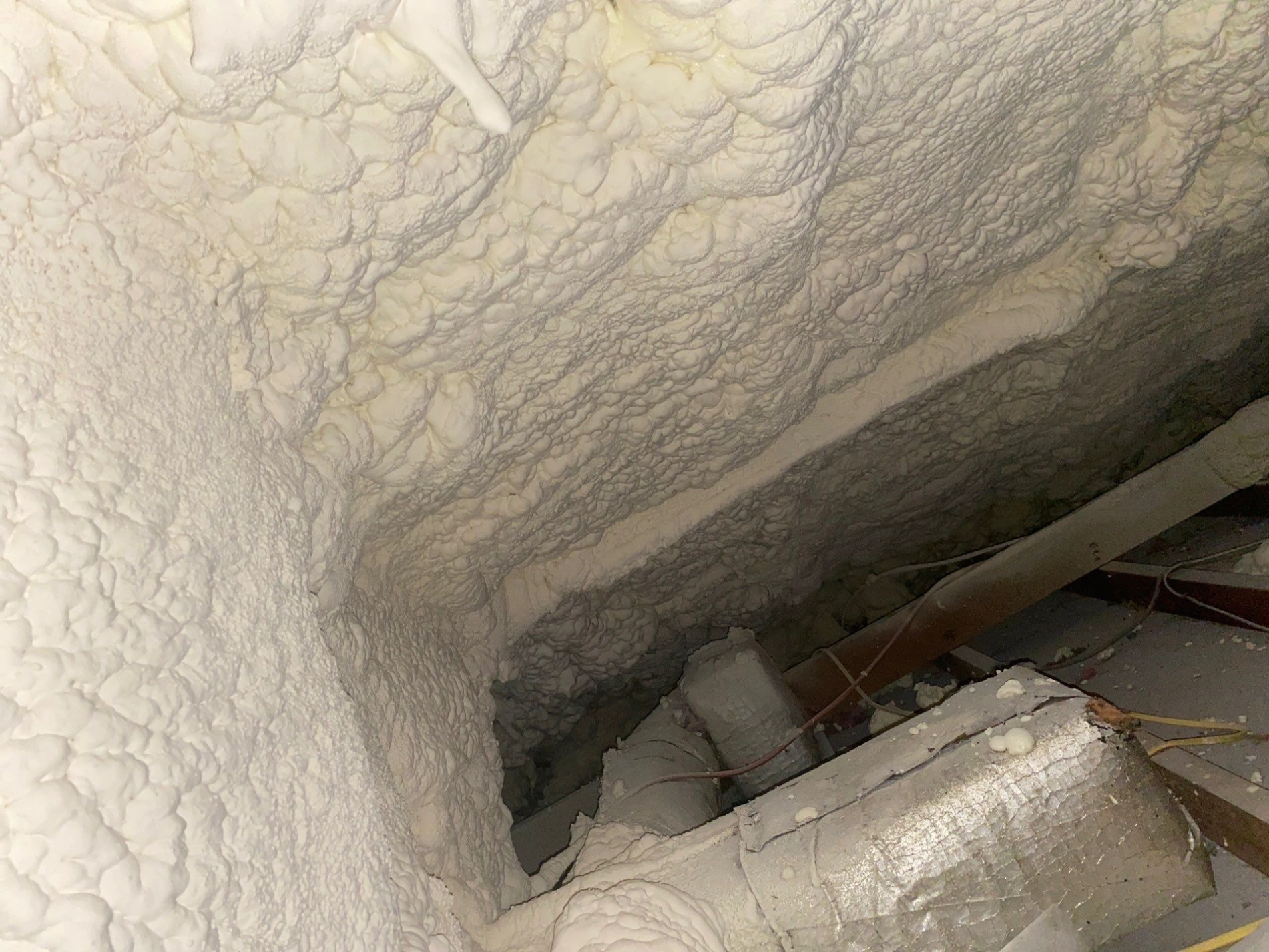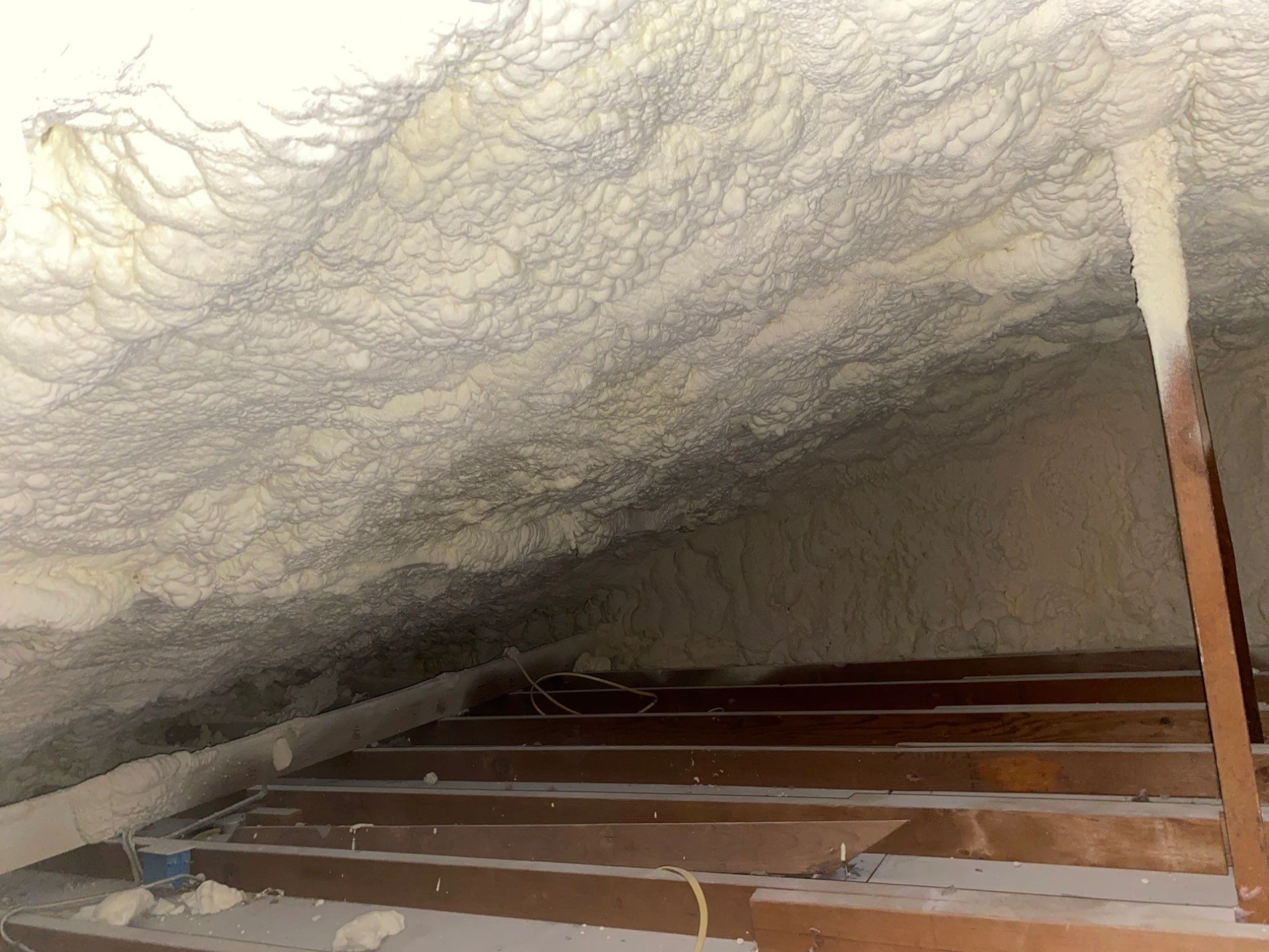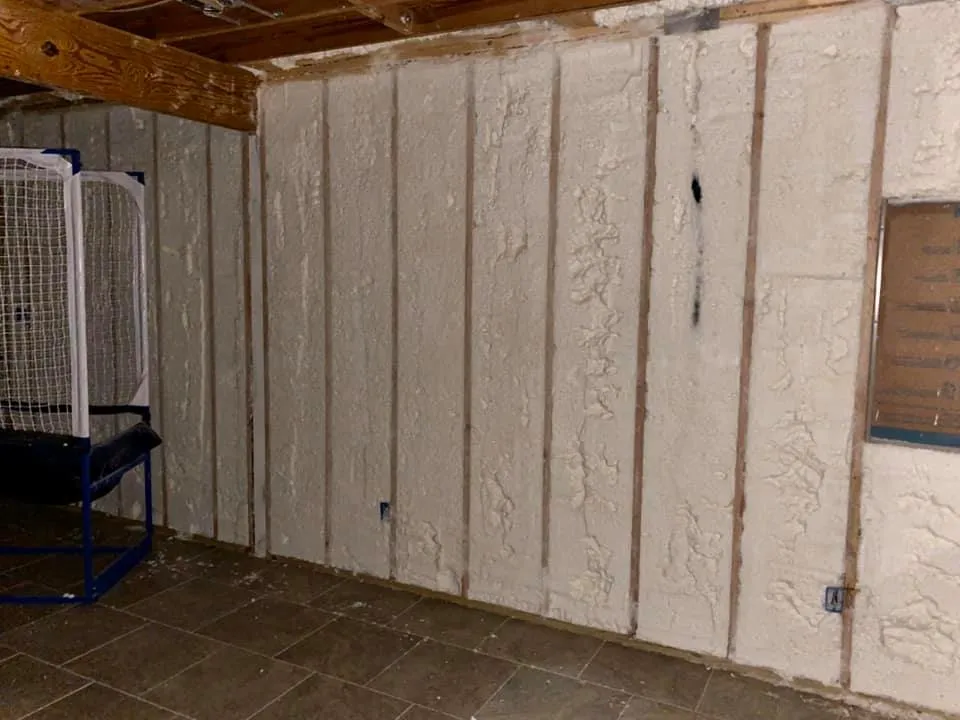Spray foam insulation significantly reduces moisture infiltration and mold growth when properly installed. Closed-cell spray foam creates an airtight barrier that prevents humid air from entering wall cavities, while open-cell foam provides moderate moisture resistance with superior breathability. The key lies in selecting the appropriate foam type based on your specific moisture conditions and climate requirements.
This comprehensive analysis examines how different spray foam types interact with moisture, their mold prevention capabilities, and the critical installation factors that determine long-term performance. Based on extensive field experience with moisture-prone environments, this guide provides practical insights for making informed decisions about spray foam applications in humidity-sensitive areas.
How Spray Foam Controls Moisture Entry
Moisture infiltration occurs through air leaks, thermal bridging, and direct water penetration. Closed-cell spray foam addresses all three pathways by forming a continuous thermal and vapor barrier. The foam’s density ranges from 1.7 to 2.0 pounds per cubic foot, creating structural reinforcement that seals cracks and gaps traditional insulation cannot reach.
Open-cell spray foam operates differently, allowing controlled moisture movement while preventing bulk water entry. This breathability becomes advantageous in climates where seasonal humidity fluctuations require vapor permeability to prevent condensation buildup within wall assemblies.
The installation process directly impacts moisture control effectiveness. Foam applied at incorrect temperatures or thickness creates weak points where moisture can accumulate. Professional installation ensures proper adhesion to substrates and achieves specified R-values without thermal bridging.
Spray Foam Types and Moisture Performance
| Foam Type | Vapor Permeance | Water Absorption | Air Sealing | Mold Resistance |
|---|---|---|---|---|
| Closed-Cell | 0.8-1.5 perms | Less than 2% | Excellent | Superior |
| Open-Cell | 15-20 perms | 5-10% | Good | Moderate |
| Traditional Fiberglass | 100+ perms | Up to 30% | Poor | Minimal |
According to Building Science Corporation data, closed-cell spray foam reduces air leakage by 50-90% compared to traditional insulation methods. This dramatic reduction in air movement directly correlates with decreased moisture infiltration and improved indoor humidity control.
Mold Prevention Mechanisms
Mold requires three conditions: organic food sources, moisture, and temperatures between 40-100°F. Spray foam disrupts the moisture component by maintaining consistent humidity levels and preventing condensation formation on cold surfaces.
The foam’s chemical composition resists organic breakdown, providing no nutritional value for mold spores. Unlike cellulose or fiberglass materials that can retain moisture and support microbial growth, properly applied spray foam maintains its structural integrity in humid environments.
Bonus Tip: Monitor humidity levels between 30-50% relative humidity after spray foam installation. This range prevents mold growth while maintaining comfortable indoor conditions and optimal foam performance.
Climate-specific considerations affect mold prevention effectiveness. Hot, humid regions benefit from closed-cell foam’s vapor barrier properties, while mixed climates may require careful moisture management to prevent seasonal condensation issues. Cold climates need continuous insulation to eliminate thermal bridging that creates condensation points.
Technical Performance Data
| Performance Metric | Closed-Cell Foam | Open-Cell Foam | Industry Standard |
|---|---|---|---|
| R-Value per inch | 6.0-7.0 | 3.5-4.0 | Varies by material |
| Vapor Permeance | 0.8-1.5 perms | 15-20 perms | Material dependent |
| Air Leakage Reduction | 85-95% | 65-75% | 0-20% traditional |
| Moisture Absorption | 1.5-2.0% | 8-12% | 15-30% traditional |
| Mold Resistance Rating | Class A | Class B | Varies widely |
Research from the National Institute of Standards and Technology demonstrates that spray foam insulation reduces overall building air leakage by an average of 75% when applied to exterior walls and attic spaces. This reduction directly translates to improved moisture control and decreased mold risk.
Installation Factors Affecting Moisture Control
Temperature and humidity conditions during installation determine foam expansion and adhesion quality. Substrate temperatures below 60°F or above 90°F can compromise foam performance, creating gaps where moisture can accumulate. Ambient humidity above 85% affects chemical reactions during foam curing.
Surface preparation removes contaminants that prevent proper foam adhesion. Loose debris, oil residues, or existing moisture create weak bonds that allow air and moisture infiltration over time. Professional installers assess substrate conditions and address deficiencies before foam application.
Bonus Tip: Schedule spray foam installation during stable weather conditions with moderate humidity levels. Avoid installation during rainy periods or extreme temperature fluctuations that can affect foam expansion and curing.
Thickness uniformity ensures consistent thermal performance and prevents thermal bridging. Uneven application creates cold spots where condensation can form, potentially leading to localized moisture problems despite overall system effectiveness.
Things to Consider Before Making a Decision
Building codes and local regulations may restrict spray foam applications in certain areas. Some jurisdictions require fire barriers or specific ventilation systems when using spray foam insulation. Verify compliance requirements before proceeding with installation plans.
Existing moisture problems require resolution before spray foam application. Installing foam over active water leaks or persistent humidity sources traps moisture and can exacerbate existing issues. Address source moisture problems through proper drainage, ventilation, or vapor control measures.
Budget considerations extend beyond initial installation costs. Closed-cell foam typically costs 30-50% more than open-cell alternatives but provides superior moisture control and structural benefits. Long-term energy savings and reduced maintenance costs often justify higher upfront investments.
Home ventilation systems need evaluation when installing spray foam insulation. The improved air sealing may require mechanical ventilation to maintain indoor air quality. Consult with HVAC professionals to ensure adequate fresh air exchange rates.
Professional Spray Foam Services Stellrr Insulation & Spray Foam Delivers
- Residential Spray Foam Insulation: Complete home insulation solutions using closed-cell and open-cell foam applications. Specialized moisture control strategies for basements, crawl spaces, and humidity-prone areas.
- Commercial Spray Foam Insulation: Large-scale insulation projects for warehouses, office buildings, and industrial facilities. Advanced moisture management systems for commercial kitchen and manufacturing environments.
- Crawl Space Insulation: Comprehensive crawl space encapsulation using closed-cell spray foam to eliminate moisture infiltration and improve indoor air quality throughout the home.
- Attic Insulation: Complete attic sealing and insulation services that prevent ice dam formation and reduce seasonal moisture fluctuations in living spaces.

Regional Climate Considerations
Hot, humid climates require continuous vapor barriers to prevent moisture infiltration from exterior conditions. Closed-cell spray foam provides optimal performance in these environments by maintaining consistent interior humidity levels and preventing condensation formation.
Mixed climate zones experience seasonal temperature and humidity variations that require careful moisture management. Open-cell foam often performs better in these conditions, allowing seasonal moisture exchange while preventing bulk water entry during wet periods.
Cold climates benefit from continuous insulation that eliminates thermal bridging. Spray foam prevents interior warm air from reaching cold exterior surfaces where condensation typically forms, reducing mold risk in wall cavities.
Bonus Tip: Consider your region’s predominant weather patterns and seasonal moisture conditions when selecting spray foam type. Local building science professionals can provide climate-specific recommendations based on regional performance data.
Common Questions About Spray Foam and Moisture Control
Does spray foam completely stop all moisture movement?
Closed-cell spray foam significantly reduces moisture transmission but allows minimal vapor movement. Open-cell foam permits controlled moisture exchange while preventing bulk water infiltration.
Can spray foam be applied in areas with existing moisture issues?
Active moisture problems must be resolved before foam installation. Once moisture sources are eliminated, spray foam prevents future infiltration and maintains dry conditions.
How long does spray foam maintain its moisture resistance properties?
Properly installed spray foam maintains performance characteristics for 20-30 years. The foam does not degrade under normal moisture exposure conditions and continues providing moisture control throughout its service life.
Will spray foam insulation eliminate the need for vapor barriers?
Closed-cell spray foam functions as both insulation and vapor barrier, eliminating separate vapor retarder requirements in most applications. Open-cell foam may require additional vapor control depending on climate conditions.
Making the Right Choice for Your Property
Spray foam insulation provides superior moisture control compared to traditional insulation materials when properly selected and installed. Closed-cell foam offers maximum moisture protection for high-risk areas, while open-cell foam balances moisture control with breathability requirements.
Evaluate your specific moisture challenges, climate conditions, and long-term performance goals when selecting spray foam solutions. Professional assessment identifies moisture sources and recommends appropriate foam types that provide lasting protection against humidity infiltration and mold growth.
Consider the total building system when implementing spray foam insulation. Proper ventilation, drainage management, and structural integrity work together with spray foam to create comprehensive moisture control that protects your property investment and maintains healthy indoor environments.
Get Expert Insulation Guidance
Moisture and mold concerns require professional evaluation and customized solutions that address your specific building conditions. Stellrr Insulation & Spray Foam provides comprehensive assessment services and expert installation that ensures long-term moisture control performance.
Contact our experienced team to discuss your moisture control needs and explore spray foam solutions that protect your property. Professional consultation identifies the most effective approach for your climate conditions and building requirements.
Stellrr Insulation & Spray Foam
Phone: (512) 710-2839
Email: info@stellrr.com
Frequently Asked Questions
How effective is spray foam at preventing basement mold growth?
Closed-cell spray foam applied to basement walls creates an effective moisture barrier that prevents humid outdoor air from entering the space. This application reduces relative humidity levels and eliminates cold surfaces where condensation typically forms, significantly reducing mold growth potential.
Can existing mold problems be addressed with spray foam installation?
Existing mold requires professional remediation before spray foam application. Once mold is properly removed and underlying moisture sources are eliminated, spray foam prevents future moisture infiltration that supports mold growth. The foam itself does not treat existing mold contamination.
What happens if water gets behind spray foam insulation?
Water infiltration behind spray foam indicates installation defects or structural issues that require immediate attention. Trapped moisture can cause substrate damage and create conditions for mold growth. Professional inspection and remediation address water sources and restore system integrity.
Does spray foam insulation require special ventilation considerations?
Spray foam’s air sealing properties may reduce natural ventilation rates below recommended levels. Mechanical ventilation systems ensure adequate fresh air exchange and maintain indoor air quality. HVAC professionals can assess ventilation requirements based on specific installation conditions.
How do I know if spray foam is working properly for moisture control?
Monitor indoor humidity levels using digital hygrometers placed throughout the home. Properly functioning spray foam maintains relative humidity between 30-50% and prevents condensation formation on windows and cold surfaces during extreme weather conditions.





